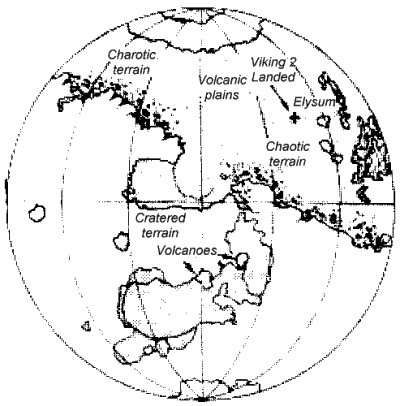 |
Science Frontiers ONLINE No. 113: Sep-Oct 1997 |
|
|
An exploded planet and the "face on mars"
Between Mars and Jupiter swirls the main main asteroid belt. In the view of many astronomers, including T. Van Flandern, there resides the debris of an exploded planet. Van Flandern has adduced considerable evidence supporting the exploded planet hypothesis, which we will pass over in favor of a look at the possible effects of said exploding planet upon a large but equally hypothetical satellite of said planet. Such a satellite would have been heavily pelted by debris on the side facing the exploding planet. Furthermore, this battered sphere, having lost its gravitational "anchor," would assume a new orbit around the sun as well as a new orientation in space.
Is there any object in the solar system plastered mainly on one side with debris and craters? You guessed it: Mars!
What possible connection could there be between this purported cataclysm and the "face on Mars"? The connecting thread is very weak but so beguiling that we must mention it.
T. Van Flandern has proposed eight tests for the artificiality of the "face" and its associated "pyramids," "city," etc. One is the three-dimensionality of the "face." Another is the "fractal" test, which is useful in distinguishing between artificiality and naturalness. The "face" readily passes four of the eight tests. A fifth test (bilateral symmetry) cannot be decided until we get more pictures. But failure looms on the last three tests (location, orientation, cultural purpose), unless Mars is sent back to the time when it was a satellite of the as-yet-unexploded planet. Then -- a couple billion years ago -- the "face" would have been smack on the equator of Mars-to-be, gazing downward perpetually upon the doomed planet. The "face" thus had a cultural purpose, a sort of cosmic "Big Brother." Carrying these thoughts to their logical conclusion, the inhabitants of the planet had colonized their "moon" and built those controversial "structures."
(Van Flandern, Tom; "New Evidence of Artificiality at Cydonia on Mars," Meta Research Bulletin, 6:1, 1997. Journal address: P.O. Box 15186, Chevy Chase, MD 20815.)
Comment. We cannot resist adding two more thoughts to all this speculation: If life on Mars really did (does) exist, it probably really originated on the supposed exploded planet! Could the explosion of this planet have seeded the earth with life, say, at the time of the unexplained Archean Explosion? (See under BIOLOGY.)
Reference. The asymmetry of the surface of Mars and other unusual geological features are collected in Chapter AME in our Catalog The Moon and the Planets. For more on this volume, go to here.
 | Eastern hemisphere of "two-face" Mars. Cratered highlands (white); lowland plains (shaded). |